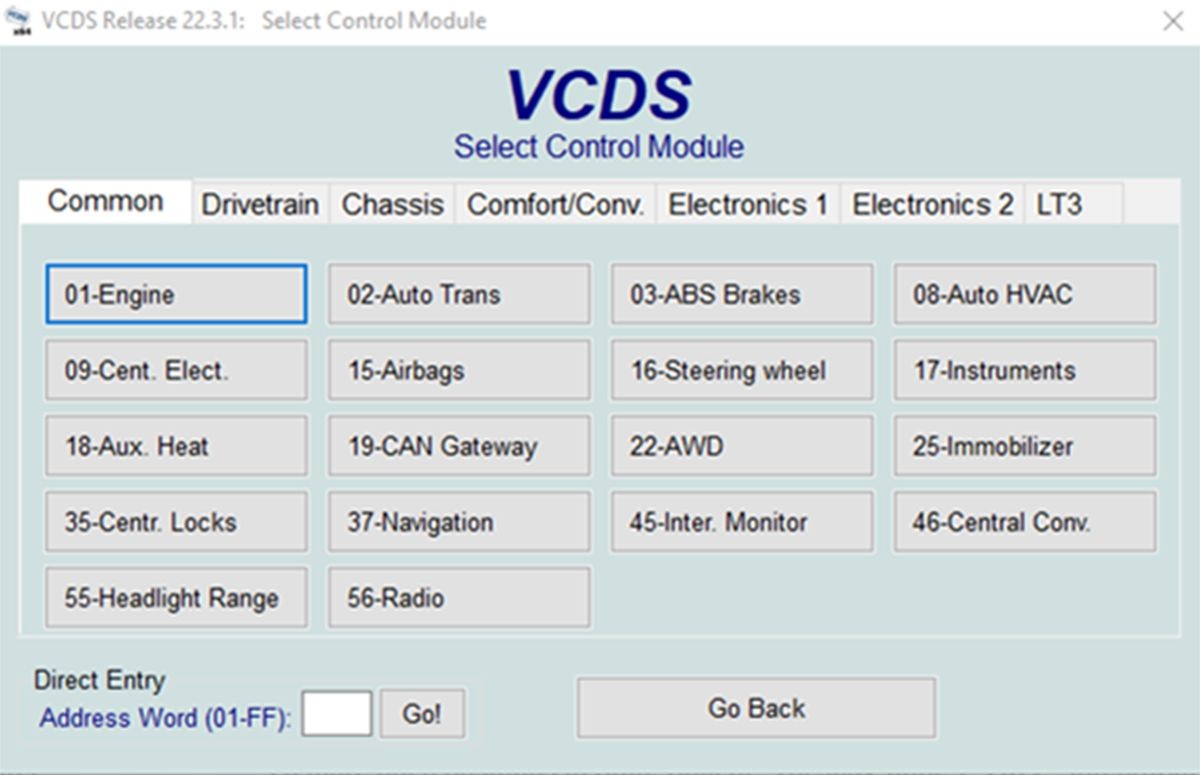VCDS, which stands for VAG-COM Diagnostic System, is a powerful diagnostic software tool developed by Ross-Tech, specifically designed for Volkswagen Group vehicles. This software offers dealership-level diagnostic capabilities, providing a much more in-depth analysis than standard OBD-II scanners. But What Does Vcds Mean for the average car owner, and why is it so important? This article will delve into the meaning of VCDS, its functionality, and its benefits.
Decoding VCDS: VAG-COM Diagnostic System
VCDS allows users to access, diagnose, and even reprogram various control modules within a vehicle. Think of it as a direct line of communication with your car’s computer system, enabling you to understand and address issues that a generic OBD-II scanner might miss. Its comprehensive functionality makes it an invaluable tool for both professional mechanics and enthusiastic DIYers.
VCDS Compatibility: Which Cars Can Use It?
VCDS is specifically designed for vehicles manufactured under the Volkswagen Group umbrella. This includes brands like:
- Audi
- Bentley
- Cupra
- Lamborghini
- Porsche
- SEAT
- Škoda
- Volkswagen
Most post-1990 models from these manufacturers are compatible with VCDS thanks to the standardization of the OBD-II port.
VCDS vs. OBD-II Scanners: What’s the Difference?
While both VCDS and OBD-II scanners retrieve diagnostic trouble codes (DTCs), the similarities end there. VCDS goes far beyond basic code reading, offering access to a wealth of information and functionality not available with generic OBD-II scanners.
- Depth of Diagnosis: VCDS provides access to all diagnosable vehicle systems, from engine components to climate control, offering a granular level of detail that standard scanners lack.
- Coding and Adaptation: VCDS allows users to make coding changes and adaptations to vehicle modules, a feature typically restricted to dealerships. This allows for customization and fine-tuning that generic scanners cannot perform.
- Comprehensive Data: VCDS provides access to over 900 DTCs, along with detailed descriptions, potential causes, and possible solutions via Ross-Tech’s extensive Wiki.
Key Features of VCDS
VCDS boasts a range of features that solidify its position as a leading diagnostic tool:
- Module Scanning: Comprehensive scanning of all vehicle modules, providing a complete picture of the car’s health.
- Measuring Blocks: Real-time monitoring of sensor data and other critical parameters, allowing for precise diagnostics.
- Output Tests: Activation of various components like actuators and relays to pinpoint malfunctions.
- Basic Settings: Performing basic settings procedures for various modules.
- Fault Code Clearing: Clearing DTCs after repairs are completed.
Cost of VCDS: Investing in Diagnostic Power
VCDS is licensed software with various options to suit different needs:
- VCDS-Lite: A limited version for older vehicles (generally pre-2005) with reduced functionality.
- Full VCDS with VIN Limitation: Offers full functionality with a limited number of VINs (Vehicle Identification Numbers) the software can be used with.
- VCDS with Unlimited VINs (HEX-NET): Provides access to unlimited vehicles and wireless connectivity.
Conclusion: VCDS – Essential for VW Group Owners
VCDS, or VAG-COM Diagnostic System, provides an unparalleled level of diagnostic capability for Volkswagen Group vehicles. Its comprehensive functionality, deep system access, and coding capabilities make it an invaluable tool for anyone who wants to understand and maintain their car. While OBD-II scanners offer basic code reading, VCDS unlocks the full potential of vehicle diagnostics, empowering owners with dealership-level control and insight.

